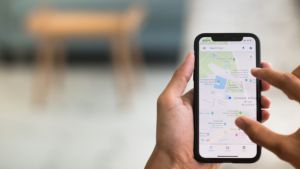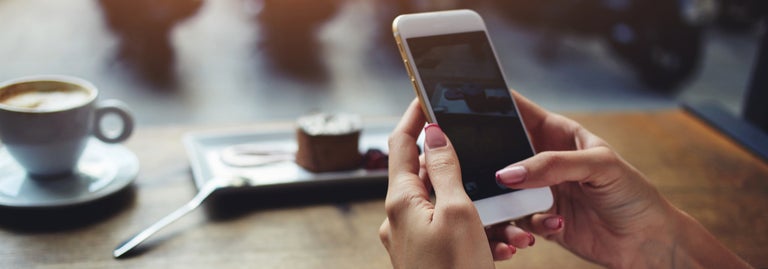Keeping track of our mobile data usage usually isn’t something we have in the foreground of our minds every day – the internet is a distracting place, and who has time to worry about data usage? We get carried away posting on Instagram, checking Facebook and accidentally downloading an entire season of The Crown for the bus ride home (one episode would have been enough, in hindsight!).
As a result, we can often get a shock when we receive that pesky text from our provider saying we’ve blown our monthly data. When this happens, you’ve got two options – switch to an expensive unlimited data plan, or make some changes. But which apps (aka, applications) are using the most data? How do you reduce your data usage? Canstar Blue breaks it down.
Which of my apps uses the most data?
By now, anyone with a smartphone should have a basic understanding of how apps chew through their data. Of course, how much data you use depends on your choice of apps and their settings. For example, don’t be surprised if Netflix is chewing through data if you’re watching in 1080p full HD. But to help you get your data addiction under control, Canstar has investigated some of the major app categories, and just how much data you can expect them to use.
Some of the highest data usage apps you are likely have on your phone:
- Streaming apps, such as Netflix and YouTube
- Social media apps, like TikTok, Tumblr and Instagram
- GPS and ride-sharing apps, including Uber and Maps

How much data does streaming use?
Streaming is often the quickest way to hit your data limit, but how much does it actually use? On average, Netflix uses over 1GB per hour streaming on standard definition, with high definition chewing through around 3GB of data per hour. While not every service offers their data usage figures, you can assume other streaming providers, including Amazon Prime, Disney+ and YouTube would use a similar amount, so it’s best to keep an eye on your data next time you click on ‘Next Episode’.
Also falling under the streaming category is music streaming apps. While no official numbers have been released by Spotify or Apple Music, multiple online sources state that a low-quality music stream uses around 40MB to 50MB per hour, while normal quality is closer to 70MB per hour and high-quality tops out around 115MB per hour. While it’s a lot more economical data-wise than video streaming, if you’re a big music fan, your tunes may be pushing you over your limit.
How to reduce data usage on streaming apps
The easiest way to cut back on data usage is to lower the definition of your stream. While you’ll sacrifice quality, it may be better to watch a blurry picture than pay a bigger bill. Alternatively, if you don’t want to sacrifice quality, you can always download your music or shows on your home wi-fi and watch/listen offline, giving you the best of both worlds.
How much data does social media use?
Most social media apps – including Facebook, Instagram, Twitter, Snapchat, TikTok and Tumblr – all use approximately 1MB-3MB per minute of use, although photo- and video-heavy apps, such as TikTok and Instagram, will use more, particularly if you have the auto-play feature on. On average, continuously scrolling for five minutes on Instagram uses about 33MB of data, meaning using Instagram for an hour could use around 400MB of data. Considering the popularity of social-media apps – and how many of them are likely to be on your phone – you may have to choose between a higher phone bill or posting that Boomerang on Instagram.
How to reduce data usage on social media apps
As videos are the biggest killers of data, altering your settings to never auto-play videos will help save you from running out of data before the month is done. And while this option is not available on all apps, you can change your settings on Facebook by going through Settings > Media and Contacts > Videos and Photos > Auto-play > Never Auto-play Videos. You can also cut down how much data your social media apps use by simply using them less, but is that really an option?
How much data does a FaceTime call use?
The FaceTime app requires an internet connection, meaning you need to either use mobile data or be connected to a wi-fi network to make FaceTime audio or video calls. Unfortunately, Apple doesn’t provide any official figures for FaceTime data usage, however there is plenty of debate and estimates thrown around online. Based on estimates, FaceTime generally uses around 3MB of data per minute of use, meaning an hour-long call could use around 180MB of data. A 10 minute FaceTime call on your iPhone will use about 30MB, and 30 minutes 90MB.

How much data do GPS and ridesharing apps use?
As GPS and ridesharing apps need constant location tracking to work effectively, they’ll often use a lot more data than you think. While no official numbers have been released, most online estimates put apps such as Maps and Uber at around 1GB-3GB of data per month. While not huge numbers compared to other apps on your phone, if you’re constantly travelling or taking Ubers, your data may also get taken for a ride.
How to reduce data usage on ridesharing and GPS apps
In addition to simply just using a location app less (although this is a bit tough when you don’t know where you’re going), you can limit location services by downloading maps and routes using wi-fi before you commence your journey. Google Maps allows you to download entire maps to your phone to navigate offline; whereas on Apple Maps if you download a route before you head out, it will be saved on your phone for use even without mobile data.
How else can I save data on my phone?
On both iOS and Android systems, there are changes you can make within your smartphone to decrease unnecessary data drainage. These include:
- On iOS, turn off ‘wi-fi assist’. This is a feature that automatically swaps your wi-fi connection to your cellular data if the phone detects a weak signal from your wi-fi. Although great in theory, if you are constantly around weak wi-fi, you may be using data in your own home more often than you think. To turn this off, go to Settings > Mobile > Wi-fi Assist > toggle ‘off’.
- For iOS, prevent iTunes and the Apple Store from automatically updating and downloading apps when you are connected to cellular data. To do this, go to Settings > iTunes & App Stores and then scroll down to Mobile and Data. From here, switch App Updates and Automatic Downloads to ‘off’. For Android, this can also be done but through the Google Play store. From there, click on the three horizontal lines on the top left of the screen, then go to Settings > Auto-update apps > and select Do not auto-update apps.
If your app usage has been cutting into your data, maybe it’s time to switch to a plan with more data. To compare phone providers for free with Canstar, just click on the button below!


Share this article